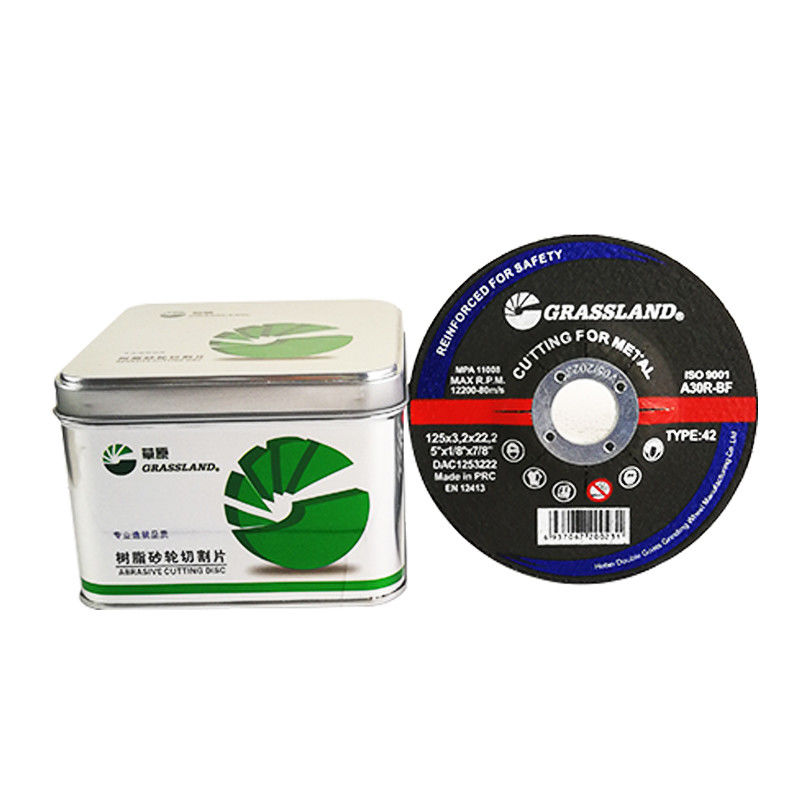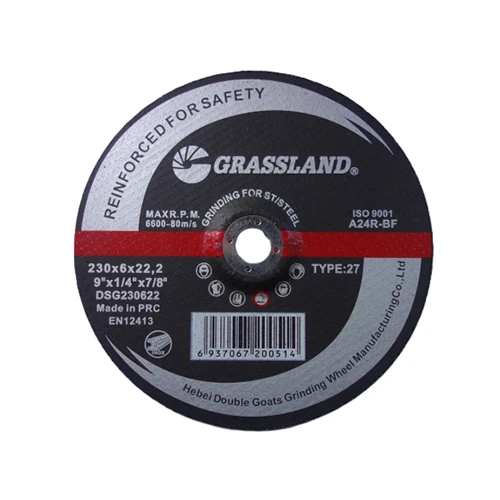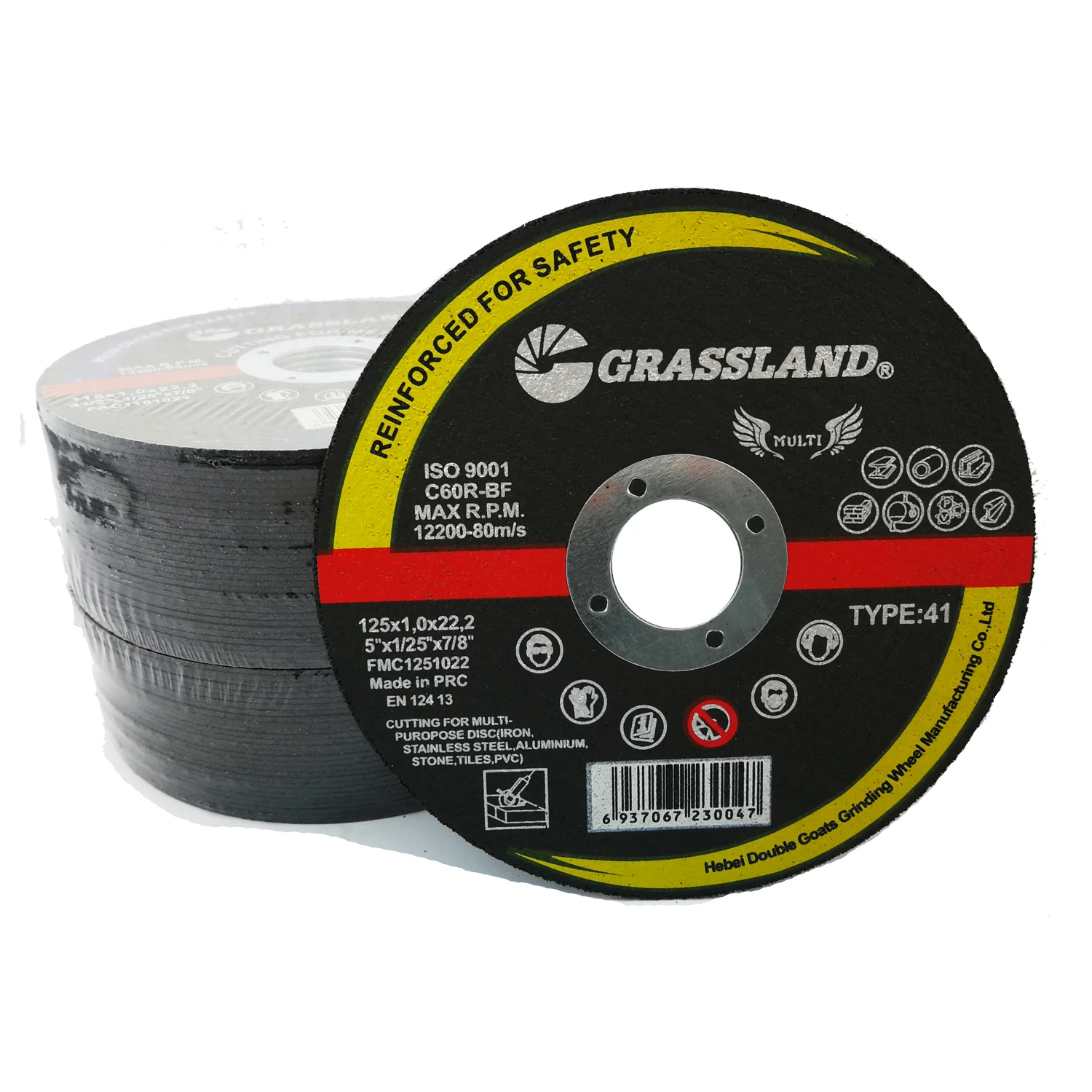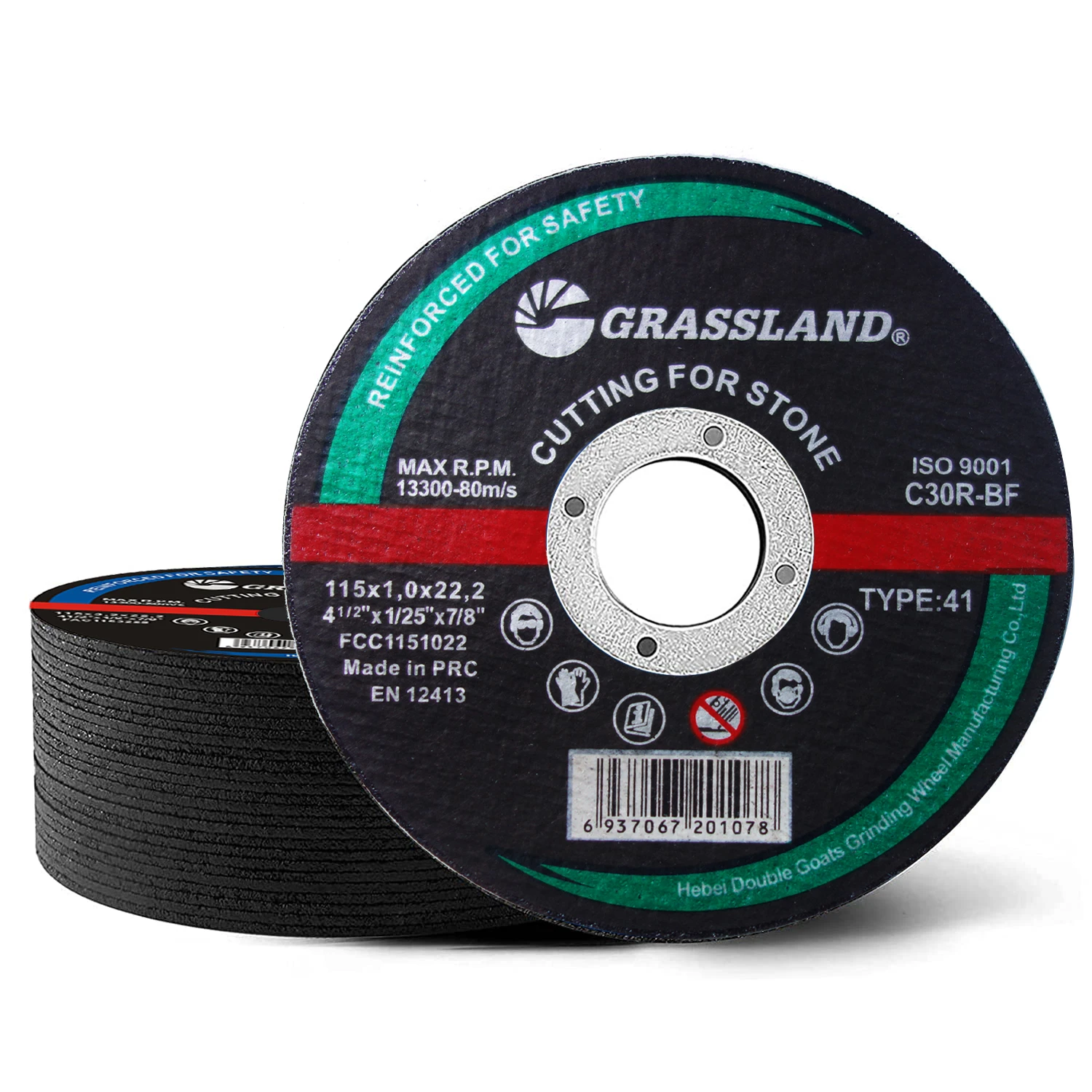Field Notes on a Workhorse: the 125×3.2×22 Metal Cut-Off Wheel
If you’re choosing a resin cutting disc for day-to-day steel work, this size—125 mm diameter, 3.2 mm thick, 22.23 mm bore—hits that sweet spot of cut stability and life. I’ve used countless variants in fab shops; the good ones keep their edge without glazing, the bad ones shower you with sparks and frustration. This one, Resin Bonded 125×3.2×22, is the steady, blue-collar type.

Quick spec sheet (real-world use may vary)
| Product | Resin Bonded 125×3.2×22 125mm Metal Cut Off Wheel (Type 41 flat) |
| Dimensions | Ø125 × 3.2 × 22.23 mm |
| Abrasive / Bond | Fused alumina (A) or zirconia-alumina (ZA) / Phenolic resin with 2 fiberglass nets |
| Max RPM | 12,250 rpm (≈80 m/s peripheral speed) |
| Hardness grade | T (medium-hard), balance of life and cool cutting |
| Standards | EN 12413, ANSI B7.1, ISO 603; burst test ≥1.5× max rpm |
| Applications | Carbon steel, stainless, rebar, profiles; dry cut only; angle grinder Ø125 |
| Origin | No.88 Economic and Technological Development Zone Shucheng, Hejian, Hebei, P.R. China |
What’s moving the market
Shops are shifting to thinner wheels (1.0–1.6 mm) for speed, but many still spec 3.2 mm for straighter cuts on heavier stock and fewer breakages—especially on site work. You’ll also see cleaner phenolic systems (lower odor), upgraded fiberglass nets, and more ceramic/ZA blends. Private-label programs are booming, but certification and traceability matter more than ever, to be honest.
How it’s made (short version)
- Materials: abrasive grains, phenolic resin, fillers (e.g., cryolite), 2× fiberglass mesh.
- Forming: cold press to T41 shape; consistent density is crucial.
- Curing: staged ovens ≈170–200°C for bond crosslinking; then cool and condition.
- Finishing: bore dressing (22.23 mm), balancing, labeling.
- Testing: dimension and hardness checks, burst test at ≥1.5× rated speed, sampling per EN 12413. Some batches run MPA-type audits.
Typical applications and tips
Structural steel (H-beams), pipe and conduit, automotive brackets, farm repairs—this is everyday grinder work. Keep the wheel aligned with the cut (no side load), use full guard, and let the grinder’s torque do the job. Many customers say this resin cutting disc throws a shorter, tighter spark stream on stainless, which usually hints at a cooler cut.
Vendor snapshot (real-world benchmarks)
| Vendor | Cut speed | Disc life | Certs | MOQ/Lead | Notes |
|---|---|---|---|---|---|
| Hebei plant (this product) | Fast on steel; steady on SS | ≈30–60 cuts on 12 mm rebar | EN 12413; ISO 9001 | 1,000 pcs / ≈15–25 days | OEM label, custom hardness |
| EU premium brand | Very fast, cooler cut | Long life; higher price | EN 12413; oSa | No MOQ / stock | Best finish on SS/INOX |
| Budget importer | Inconsistent | Short life | Claims only | 2,000+ / 30–45 days | Variable QC; watch burst data |
Customization options
Grit 36–60; alumina, ZA, or ceramic blends; hardness S–T–U; 1 or 2 fiberglass meshes; private label artwork; barcoding; cartons sized for retail or industrial. Bore stays 22.23 mm; thickness can be tuned from ≈1.0 to 3.2 mm depending on your priority (speed vs rigidity). For heavy site work, I still like a 3.2 mm resin cutting disc—less drama.

Field test and feedback
In a Queensland fab shop (mild steel tube, 2–4 mm wall), this wheel averaged ≈18% faster through-cuts vs their previous import and reduced wheel swaps by ≈22% over a week—less downtime, fewer half-worn discs tossed. Operators noted a smoother start and no mid-cut wobble. G-ratio hovered around 2.3–2.7 depending on the grinder and pressure.
Safety and compliance (don’t skip)
- Use guards and blotters; never side-grind with a cut-off wheel.
- Check expiry and storage; avoid humidity that softens resin bonds.
- Match rpm: 125 mm wheels at 12,250 rpm max; verify on your grinder nameplate.
- Follow EN 12413/ANSI B7.1 handling and burst criteria.
Citations
Post time:Oct - 16 - 2025

















